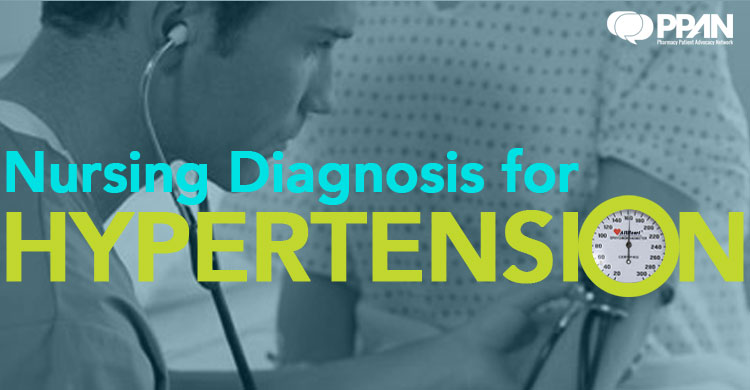Nursing Diagnosis for Hypertension
Hypertension generally refers to conditions where blood pressure levels are considered consistently higher than the normal baseline for people within the same age demographic. However, there are a number of factors that can impact what is considered a healthy baseline for any individual, and this can make it important for a nursing diagnosis for hypertension to address these aspects, especially when considering interventions.
A blood pressure of 120/80mmHg or lower is considered within the normal range, while ranges of 140/90mmHg are either pre-hypertensive or fully hypertensive. However, while these baselines are guiding indicators in making a diagnosis, lower or higher blood pressure can still be a health function for the individual in question.
Covering All Bases Prior to Diagnosis
Although the actual tests for blood pressure can greatly inform a nursing diagnostic for hypertension, adjunct information can also be necessary before proceeding further with any treatment options. This type of information can include:
- A thorough physical examination to indicate any other problems with circulation
- Taking a concise medical history, including the documentation of incidences of fainting or dizziness as well as any family history of the condition
- Imaging tests such as X-rays, CAT scans, or ultrasounds, which can indicate structural issues that may contribute to the expression of high blood pressure
- Electrocardiograms to monitor actual heart activity and strength of pumping
- Retinal examinations which can show low level petechial hemorrhages in the capillaries of the eyes
Each of these further diagnostic tests can also determine whether the indication of blood pressure levels is actually indicative of hypertension. In some cases, structural obstructions in the blood vessels can lead to variance in blood pressure readings, although this does not mean that the individual truly suffers from chronic hypertension.
Routine Factors Impacting Blood Pressure
This is also important since hypertension can be a symptom as much as it can be a condition. Individuals who indicate high levels of daily stress could be registering these variables on a blood pressure test, although the root cause of the symptom of hypertension may relate back to emotional causes. Further routine factors that can also impact blood pressure readings include:
- Fatigue
- Recent food consumption, which could include chemicals that temporarily raise blood pressure
- Supplementation regimens, as multivitamins with B complexes and especially niacin can also affect fluctuations in blood pressure
- Overall emotional state, as individuals who are grieving or have suffered a sudden loss can also exhibit uncharacteristic pressure readings
This is part of why the protocols for conducting a comprehensive medical history can be so important in forming a nursing diagnosis for hypertension, as it can fill in gaps in information. Further tests can also confirm these findings, and provide a better picture of the person’s overall health.

When the Nursing Diagnosis Indicates Hypertension
After following a thorough examination and round of tests, patients may still show that hypertension is a significant health issue. When this is the case, nursing diagnosis for high blood pressure should further explore the causes of the condition in order to reach an appropriate and viable treatment plan. This also means that there are several diagnosis for hypertension that can be crucial to make for patient well-being.
- Reduced cardiac output – this happens when the heart is unable to pump blood at a sufficient rate which will actually meet the body’s metabolic needs. Verifying this outcome can require testing blood pressure on both arm and on the legs, in order to determine where blood pressure may be becoming elevated. Checking for swelling from water retention, differences in pulse rates on extremities, and visually looking at skin color for cyanosis can also confirm a diagnosis of reduced cardiac output, which can be a precursor to heart failure.
- Acute pain – sensations of discomfort can accompany certain causes of high blood pressure, and this can be a result of pressure in the blood vessels but also of possible obstructions to circulation. Helping the patient to verbalize the pain sensations can provide a clearer picture of the cause, as can the use of relaxation techniques, to determine whether the discomfort is emotionally of physically based. If pain is still present after postural changes, then the possibility of constriction in the blood vessels can also be a part of the diagnosis.
- Activity intolerance – high blood pressure can reduce energy levels, simply due to the energy that is expended in keeping the blood circulating at this level. However, lack of activity can further exacerbate this intolerance, so working with patients to build greater self-sufficiency can also provide a better sense of the overall health issue. If energy conserving techniques are still meeting with activity intolerance, then decreased oxygen capacity for the blood could also be related to the overall diagnosis.
- Excess nutrient intake – although this can be a common factor for people who present as overweight or obese, even individuals with an ectomorph build may still be overloading their body with nutrients. Specific nutrients such as salts and nitrate preservatives can also contribute to hypertension, and by working with patients to adjust activity levels and food intake, this may also be a part of the nursing diagnosis for hypertension.
- Patient understanding – although hypertension can be a chronic hereditary condition, it can also be a temporary effect that is related to uninformed lifestyle choices. Through raising awareness about the contributing factors of high blood pressure, the long-term effects, and preventive measures that may be taken, many patients are able to manage and even eliminate the condition. In these cases, while an initial diagnosis of hypertension is still valid, the correlation to lifestyle factors can indicate that the condition was opportunistic, rather than congenital or chronic.
In nursing diagnosis for hypertension, it can be integral to evaluate all of the factors that can result in a high blood pressure reading. However, by examining more of the possible causes and interventions that address them, nurses can not only provide better care for patients, but can also become more definitive in categorizing life threatening and lifestyle issues that are associated with hypertension.





